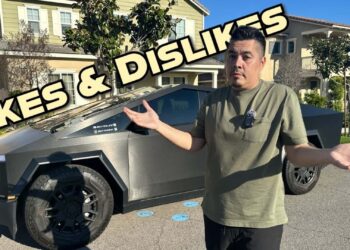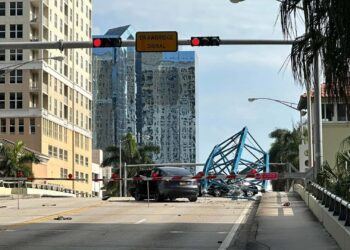The National Highway Transport Safety Administration (NHTSA) recently maintained that it is not convinced that Tesla’s safety-focused over-the-air (OTA) software updates need a new terminology. In a comment to Teslarati, the NHTSA stated that any defect, regardless of whether a remedy to an issue is fixed through an OTA update or a visit to a dealership, fits the bill of a recall.
While the NHSTA is justified in this point considering the agency’s focus on vehicle safety, one would find it difficult to argue that Tesla’s software update that slightly increases the font size of three icons is a serious safety issue. And considering that about 2 million Teslas are affected by the “recall,” the NHTSA has started “informing” Tesla owners about the issue.
The thing is, the NHTSA sends paper notifications to affected Tesla owners informing them about recalls on their vehicles. This is understandable of course, but letters for some of Tesla’s recalls — particularly those that have already been addressed through an OTA software update — seem redundant and extremely wasteful. As shared by some Tesla owners on social media, the paper letters from the NHTSA are basically informing owners that their vehicles have already been fixed through a free over-the-air software update.
Do I need to return the recall letter back to NHTSA since my Tesla car was already fixed! They can use the letter for the next recall! pic.twitter.com/2g4IokJy5D
— Tesla𝕏Charge (@BabuNair) February 16, 2024
The NHTSA’s paper recall notices to Tesla’s software-based recalls have become a running joke of sorts among EV owners on social media. Some Tesla owners joked that since the NHTSA’s recall notices are printed on high-quality paper, a good number of trees were probably used just to tell owners that they have nothing to do since their cars have already been fixed.
@NHTSAgov @USDOT <— Save a tree and get with the times. The font size was changed a month ago in my garage while I slept, but thanks for the heads up 🙄 pic.twitter.com/qnwl1QvxYg
— Morgan (@l_LlKE_CAKE) February 16, 2024
With the advent of electric vehicles, over-the-air software updates are no longer a Tesla-only affair. Other EV makers such as Rivian and Ford have also started rolling out constant software updates for their electric cars. These cars will likely receive safety-focused software optimizations over time, so it might be in the best interests of the NHTSA to more accurately distinguish a software update from a legitimate recall.
Happy valentines .@NHTSAgov ♥️ pic.twitter.com/TUCABbHC3a
— Meccanica (@dictionaryhill) February 15, 2024
There is a big difference between Tesla’s update to increase the font size of three icons, after all, to Toyota’s previous recall of the bZ4x, which was initiated by the Japanese automaker after it was observed that the all-electric crossover showed a risk of losing its wheels while driving.
“We’ve been trying to reach you about your displayed font size” –@NHTSArecalls https://t.co/1N6hBpEMxM pic.twitter.com/J14N94AyRf
— The Kilowatts 🚗⚡️ (@klwtts) February 16, 2024
Like many of you, I am tired of receiving paper letters from @NHTSAgov for issues that were already remediated via over-the-air (OTA) software updates. It is high time we update the terminology used to describe these type of enhancements as well as end the wasteful practice of… pic.twitter.com/23oMSpsaAW
— Dan Burkland (@DBurkland) February 15, 2024
Don’t hesitate to contact us with news tips. Just send a message to simon@teslarati.com to give us a heads up.









